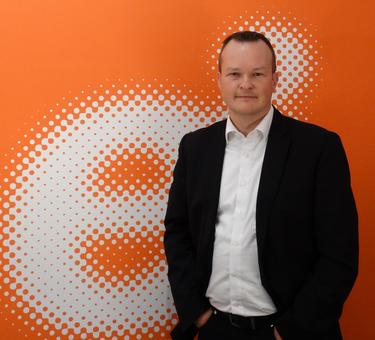Prologis leads by example by minimizing the environmental impact of our logistics facilities. Our Environmental, Social and Governance (ESG) program serves our 5,100 customers around the world. Because sustainability is increasingly central to their brands and business models – including their own sustainable supply chain goals – our sustainable buildings give us an edge in attracting and retaining top companies.
Prologis’ energy-efficient buildings lower our customers’ operating costs. By providing our customers with energy and water efficient buildings, we strengthen our business partnerships by lowering their operating costs and helping them meet their own sustainability goals. We are constantly monitoring and testing new innovations to implement best practices in our facilities. We spoke to engineer Lars Knabben, associate director of the energy consulting firm e² energieberatung GmbH, to explain the nuances of carbon neutral logistics facilities in Germany. We worked with Lars’ team in developing sustainable concepts for logistics facilities – out latest cooperation was the concept for the logistics facility for L’Oréal in southern Germany.
1. What does the term “carbon neutral” mean when it comes to real estate?
Lars Knabben: The term “carbon neutral” is not regulated or legally defined, which means we first need to determine how to define carbon neutrality for each project. Is the only goal for the facility’s operations to be carbon neutral? Or does the developer want to achieve a net-zero carbon footprint during construction?
Carbon dioxide is emitted when electricity and gas are consumed. These emissions can be reduced and even offset by various measures. In order to achieve carbon neutrality, the overall difference between emissions and carbon offsets must equal zero. By monitoring meters, customers can check whether the operation of a property continues to be carbon neutral. The monitoring meters also help Prologis to identify potential for further energy efficiency measures.
2. How does a building become carbon neutral?
Lars Knabben: When planning a carbon neutral building, e.g. a logistics facility, it is helpful to use a five-stage model:
Stage 1: Defining the carbon neutrality of the facility. Is the goal for the facility’s operations to be carbon neutral or also its construction?
Stage 2: Determining the expected energy demand of the facility.
Stage 3: Identifying potential energy-efficiency measures. Where can energy be saved? For example, based on our long term experience as an energy consultancy, we understand that better insulation can reduce heating consumption by up to 10 percent.
Stage 4: Selecting suitable carbon offsetting measures. A solar-powered system, for example, can compensate for emissions. The power generated by the system is fed into the grid and compensates for the carbon emitted by operating the facility.
Stage 5: Supplying the facility with renewable electricity. Purchasing renewable electricity generated by solar, wind or hydropower is a sustainable alternative to conventional electricity.
A model project in terms of carbon neutrality is a logistics facility currently under development for L'Oréal in Muggensturm, near Karlsruhe, Germany. Based on the definition above, the facility is anticipated to be completely carbon neutral. Among other measures, Prologis is equipping the distribution center with a high-quality building shell with a heat transfer, meaning heat loss that not only meets legal requirements, but is 30 percent below the permissible maximum. The facility is heated by energy-efficient gas radiators. The lighting is LED. In addition, a solar power system with a maximum capacity of 2.0 megawatt is installed on the roof.
3. The additional costs associated with achieving carbon neutrality when developing a facility are high. Is the investment worth it?
Lars Knabben: An investment in the carbon neutrality of a logistics building can have considerable financial advantages. Although a solar power system, for example, may generate additional costs for cleaning and maintenance, the system produces a significant amount of renewable electricity. A carbon neutral facility’s heating costs can also be significantly reduced as long as the user maintains the predetermined temperature and avoids unnecessary consumption.
In addition, I expect lawmakers in Germany to introduce stricter regulations over the next five to 10 years in regard to companies’ carbon footprints—in which case numerous facilities will need energy-efficiency upgrades. Everyone who develops carbon neutral today is making an investment in the future.
4. Do companies in Germany currently need to fulfill any requirements when it comes to carbon emissions?
Lars Knabben: The World Green Building Council has drawn up initial guidelines for carbon neutrality in the building sector. In the past, Germany was a pioneer in the field of energy efficiency; today, unfortunately, we are lagging behind EU requirements. We do not currently assess CO2 emissions in Germany, but instead primary energy consumption. The German Sustainable Building Council has developed its first framework and is currently debating whether to audit facilities regularly. In other words, the industry is still looking for a suitable approach.
Prologis’ Sustainability Goals
At Prologis, sustainability plays a key role in many areas of the company. We operate in a socially responsible manner in the communities in which we do business and are committed to minimizing the environmental impact of our facilities and operate with the highest ethical standards. We meet or exceed recognized sustainable building standards, which is more sustainable for communities and allows our customers to operate more efficiently.
